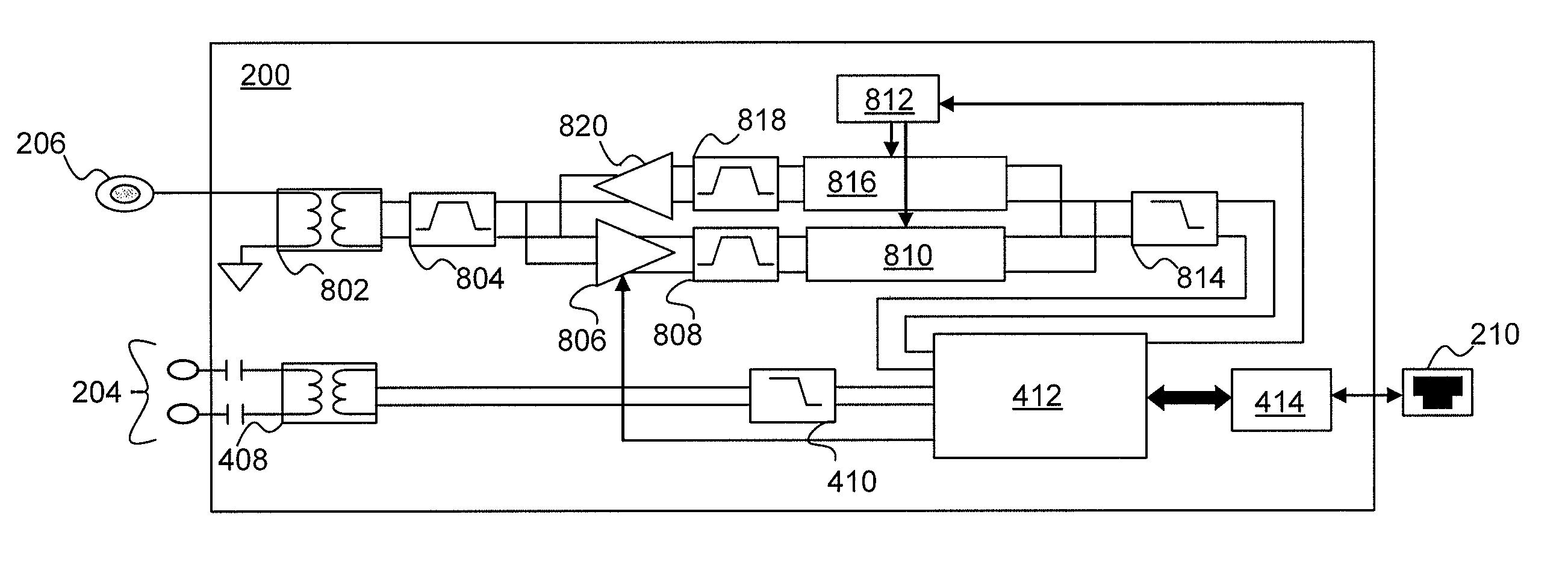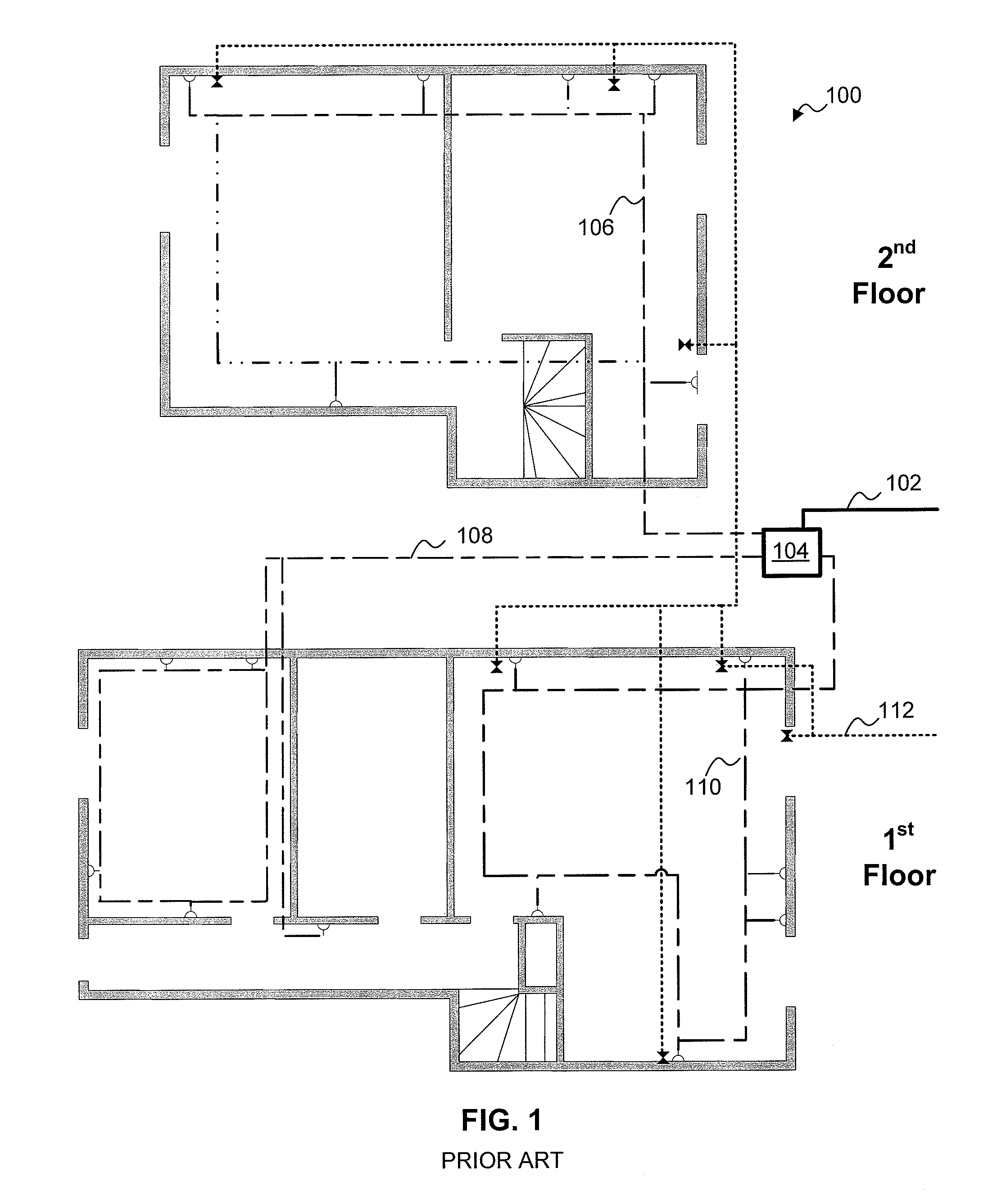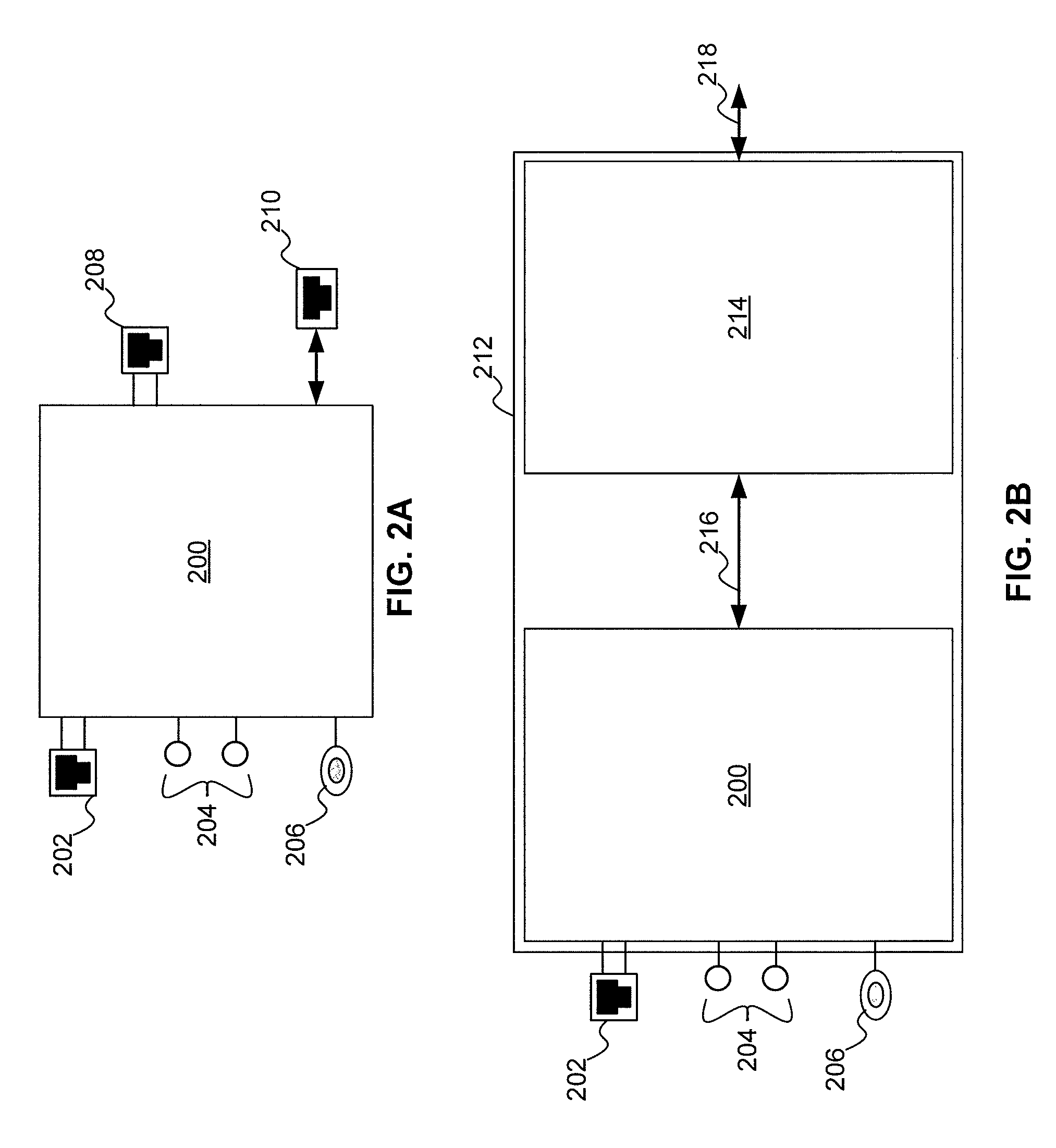Multi-wideband communications over multiple mediums
a multi-media, multi-channel technology, applied in the field of communication, can solve the problems of limiting the ability of devices to communicate with one another, unable to meet the needs of the home, and unable to use the phone line or coax of any apparatus,
- Summary
- Abstract
- Description
- Claims
- Application Information
AI Technical Summary
Benefits of technology
Problems solved by technology
Method used
Image
Examples
second embodiment
[0082]FIG. 5 is a block diagram of the multi-network interface device 200. In this embodiment, the multi-network interface device 200 is configured to communicate a first signal via the low band 304 over a powerline and to communicate a second signal via the high band 306 over a telephone line. The multi-network interface device 200 additionally comprises a second telephone line interface 208. The second telephone line interface 208 may be used to communicate voice, ADSL, VDSL, or HPNA signals within band 310.
[0083]To allow communication between the telephone line interface 202 and the second telephone line interface 208, an optional second inductive coupler 502 may be placed between the surge protector 402 and the inductive coupler 404. The second inductive coupler 502 is coupled to an optional low pass filter 504 to isolate the signal within the band 310 from other communications signals communicated within the high band 306. The low pass filter 504 may pass frequencies below appr...
third embodiment
[0084]FIG. 6 is a block diagram of a multi-network interface device 200. In this embodiment, the multi-network interface device 200 is configured to communicate a first signal via the low band 304 over a powerline, to communicate a second signal via the high band 306 over the powerline, and optionally to communicate the second signal or a third signal via the high band 306 over a telephone line. The multi-network interface device 200 comprises a second telephone interface 208 from which a fourth signal, in band 310, may be communicated as discussed in connection with FIG. 5.
[0085]The multi-network interface device 200 comprises a network processor 412 having a single high frequency AFE 416 configured to receive or transmit signals communicated via the high band 306 over both the powerline and the telephone line. The single high frequency AFE 416 optionally includes passive sharing of the powerline and the phone line. As such, the single high frequency AFE 416 can only receive or onl...
fourth embodiment
[0086]FIG. 7 is a block diagram of the multi-network interface device 200. The embodiment of multi-network interface device 200 illustrated in FIG. 7 is substantially similar to the multi-network interface device 200 illustrated in FIG. 6 except for a dual high frequency AFE 702. The dual high frequency AFE 702 includes two separate inputs configured to independently and simultaneously communicate signals in the high band 306 and through both the telephone line interface 202 and the powerline interface 204.
PUM
 Login to View More
Login to View More Abstract
Description
Claims
Application Information
 Login to View More
Login to View More - R&D
- Intellectual Property
- Life Sciences
- Materials
- Tech Scout
- Unparalleled Data Quality
- Higher Quality Content
- 60% Fewer Hallucinations
Browse by: Latest US Patents, China's latest patents, Technical Efficacy Thesaurus, Application Domain, Technology Topic, Popular Technical Reports.
© 2025 PatSnap. All rights reserved.Legal|Privacy policy|Modern Slavery Act Transparency Statement|Sitemap|About US| Contact US: help@patsnap.com



